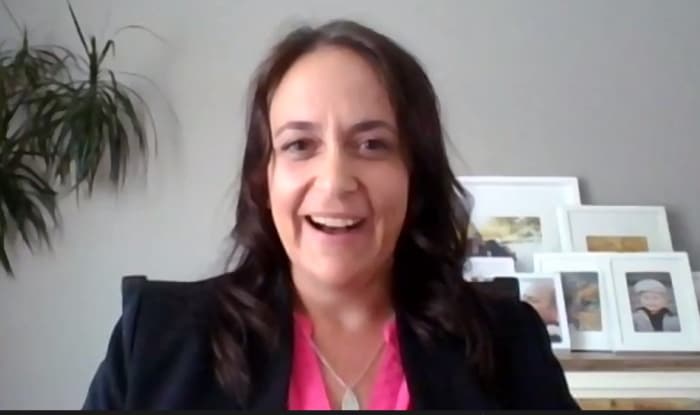
Photo by Matt Noble via Unsplash
Brain Injury Treatment Panel: Concussive Events and Their Impact On Vision
By Eliza Marie Somers
You may have heard the phrase: “The ayes have it,” however, for the brain injury community it’s the EYES that have it.
Dr. Amy Elsila, OD said she was discussing brain injuries with colleagues and noted that “80 to 90 percent of people with brain injuries have some sort of vision problems. But one of my colleagues, said, ‘No. It’s 100 percent!”
Elsila was one of the panelists at the Brain Injury Hope Foundation’s Survivor Series: Concussive Events and Their Impact on Vision on May 14, 2021. Also on the panel were Dr. Amy Chang, OD, FAAO, F.C.O.V.D, and vestibular therapist Jaimy Wahab, PT, DPT, NCS.
Amy Chang, OD, FAAO, F.C.O.V.D
Niwot Eyecare and Vision Therapy
6800 79th Street, Suite 101 Niwot, CO 80503
Website: https://www.niwotvision.com/
Dr. Amy Elsila, OD
Hellerstein & Brenner Vision Center
7400 E. Orchard Road, Suite 175-S Greenwood Village, CO 80111
Website: https://hbvision.net/
Jaimy Wahab, PT, DPT, NCS
Balance and Neurologic Center of the Rockies
5387 Manhattan Circle, Suite 100A Boulder, CO 80303
Website: http://www.balanceandneurologic.com/
“Vision doesn’t exist in isolation. Systems have to work in sync. Vestibular nerves, occipital nerves all have to work together,” Dr. Amy Chang said. “Your vision and eye might be healthy, but there are 500 visual pathways to the visual cortex, to the motor function, to spatial awareness.”
After a brain injury, survivors tend to have a difficult time labeling their symptoms, and that’s where a vision therapist can step in to help a patient.

Dr. Amy Chang says there are more than 500 visual pathways to the brain from the eyes.
“There are a lot of symptoms that patients have a hard time verbalizing. As clinicians we have to figure this out,” Elsila said. “Is there visual strain? Before the brain injury the patient might have had a high functioning job where they were on the computer for eight hours, now they can’t do five minutes. They are reading slower, they get lost on the page, the eyes are not in sync and not tracking correctly.”
Elsila explained there are three main vision issues after a TBI:
- Focus
- Tracking
- Spatial Awareness.
“It takes more brain energy to focus, and your brain becomes tired,” she said. “Tracking, saccades are the eyes moving or jumping. There can be light sensitivity. It can be a visual overload. And where is your body in space? Your midline can shift after a brain injury. … It’s a whole host or symptoms.”
All of these vision issues can put a strain on the vestibular system (or balancing systems), which includes the brain, eye and ears. According to Johns Hopkins School of Medicine symptoms of vestibular balance disorder include:
- Dizziness
- Feeling off-balance
- Feeling as if you are floating or as if the world is spinning
- Blurred vision
- Disorientation
- Falling or stumbling
Less common symptoms include:
- Nausea
- Diarrhea
- Vomiting
- Anxiety
- Fear
- Changes in your heart’s rhythm
“We do habituation exercises or desensitizing training,” said Jaimy Wahab, PT, DPT, NCS. “There are three systems working on balance with vestibular as the primary, then there is vision and proprioceptive.”
The proprioceptive system is located in our muscles and joints. It provides a sense of body awareness and detects/controls force and pressure.
“Vestibular detects head motions,” Wahab explained. “You get a signal from your ear all the time, even when you are not moving. Your brain wants to know when you are moving and when you are not.
“With vision, are the eyes also moving in sync? Say you are at the grocery store and you get dizzy going from aisle to aisle turning your head. And the proprioceptive receptors are in our neck, are those receptors working and telling you if you are moving?
“All three systems tell you if you are moving or not. And if they are not working in sync, you get dizzy with motion; in a crowd it’s too much for the eyes and ears to coordinate.”
And when these delicate systems are not working in harmony, Wahab said your brain makes adaptions. “Say your ears are not working, you tend to rely heavily on the eyes. The eyes get tired, and you get dizzy. My job is to isolate the systems and rehab the systems.”
Chang expanded on the systems not working together and what that means for a TBI survivor, along with some methods that might help the patient. She said the central visual system tends to remain intact after at TBI, but the peripheral vision becomes impacted.
“There is this imbalance, and we can’t process so well,” Chang said “Like the windshield wipers or the shadows coming from the trees can become problems when driving.
“The peripheral vision tends to collapse,” Elsila concurred. “It’s like walking around looking through paper towel rolls. You take in snippets. It’s shaky. It’s exhausting. And it overloads the system.”
Both visual therapists said special lenses, such as prisms and certain tints can help stabilize the eyes, open up the peripheral vision, and add more functionality to “get you back to normal.” Chang explained prisms don’t have to be a life-long necessity, saying a majority of patients need them for only two to six months, and maybe a bit longer for a survivor who is farther out from injury.
And here’s something survivors can do right now to help with vision: use blue light blockers or change computer screens and phone screens to night mode to help with vision issues. Or use an app such as Just Get Flux to adjust your computer or phone screens.

Physical therapist Jaimy Wahab notes vision and vestibular problems can cause cognitive issues as TBI survivors use more brain power just to navigate their surroundings.
Cognition and Anxiety
Who would have thought cognitive issues would be impacted by vision instability?
“Some people even have cognitive changes,” Wahab said. “It becomes a difficult task to navigate the world. The brain tires from trying to autocorrect. Then our attention and concentration become difficult. What should be automatic now becomes difficult. It’s very cognitive. It’s hard to pay attention and concentrate. And if you take care of the vision, the cognitive piece starts to take care of itself because the brain isn’t trying to autocorrect. You feel more clear.”
Wahab went on to explain some TBI survivors can experience panic attacks along with anxiety after a brain injury.
“There is evidence that when there is vestibular or vision problems it invokes the fight or flight response,” she said. “This emotional response is so common with vision disorders.
“You get this fight or flight response to balance problems, falling, vertigo is a threat to the system, and that threat puts the system into automatic drive – a patient starts sweating, feeling hot, feeling nervous. It’s our brain’s protection mechanism to what it sees as a threat if we are over stimulated. Problems with the eyes or ears can cause anxiety.
“If you fix the visual component, people feel more calm, and it’s not a threat to the nervous system.”
Another area that can be impacted is speed of processing, which tends to become slower after a TBI. It’s trouble following conversations, finding the right word because the brain is tired from working so hard to keep a TBI survivor focused and balanced.
“I equate it to having too many tabs open on your computer screen, the computer will process slower,” Wahab said.
Vision therapy and vestibular therapy might be the missing pieces in helping to get a TBI survivor back on normal ground, and it can be a difficult task.
“The work is not easy,” said Joanne Cohen, vice president of the BIHF and the seminar facilitator, citing the saying: You have to go through it to get through it in order to get better.
But don’t give up, said the panelists.
“No matter what the visual consequences after at brain injury, with training these symptoms can improve,” Elsila said.
“There is help,” Wahab said. “I’ve seen patients years out (from injury) get better.”
“Don’t give up,” Chang echoed. “I’ve seen many patients recover with the right team and hard work. You don’t have to live the rest of your life like this.”
Help for Brain Injury Survivors
Your local Division of Vocational Rehabilitation can help people with disabilities get back to work by providing vision therapy, vestibular therapy and cognitive therapy.
For more on Vision Problems and Brain Injuries
The Brain Injury Hope Foundation does not endorse any healthcare providers. The goal with the Treatment Panel is to provide information to TBI survivors and their families and caregivers so they can research methods best suited for their recovery.


